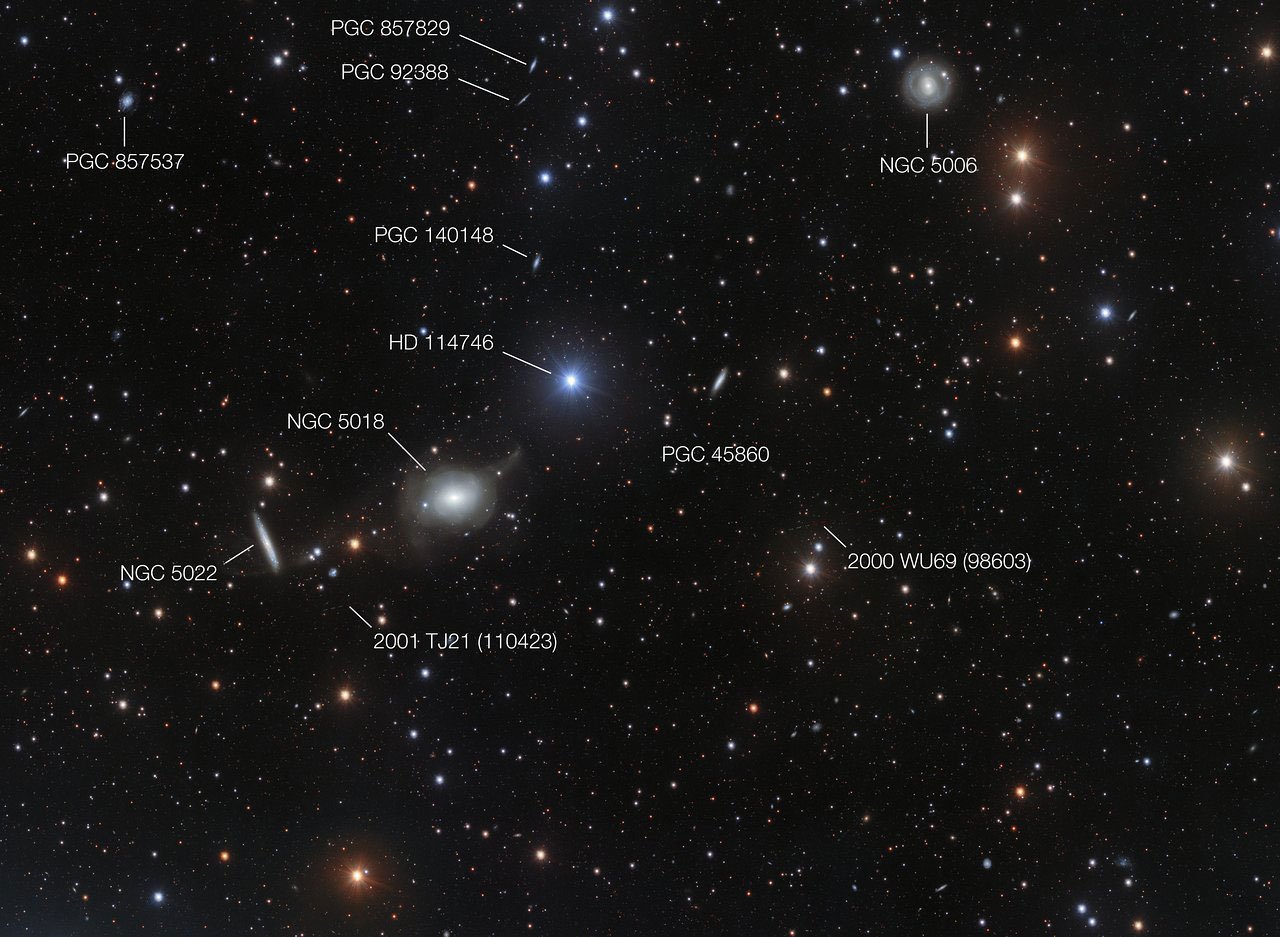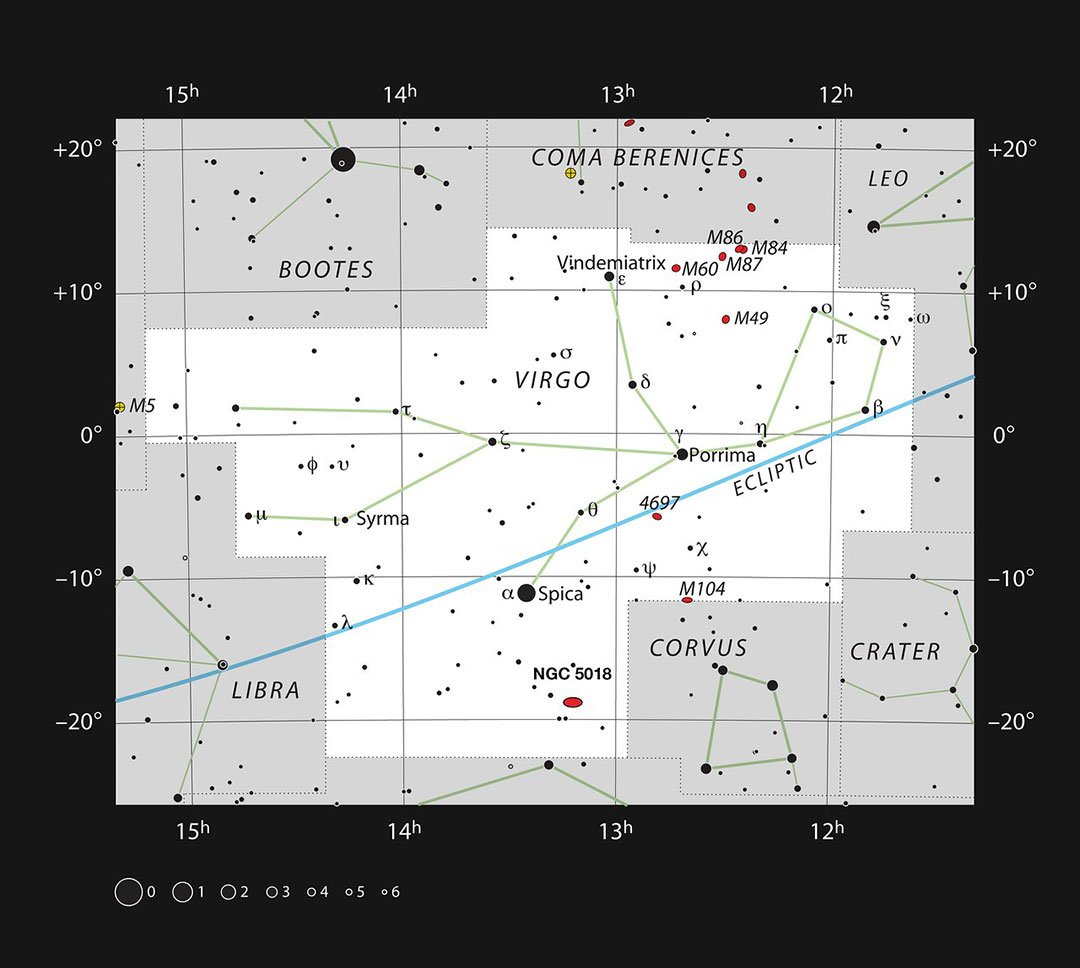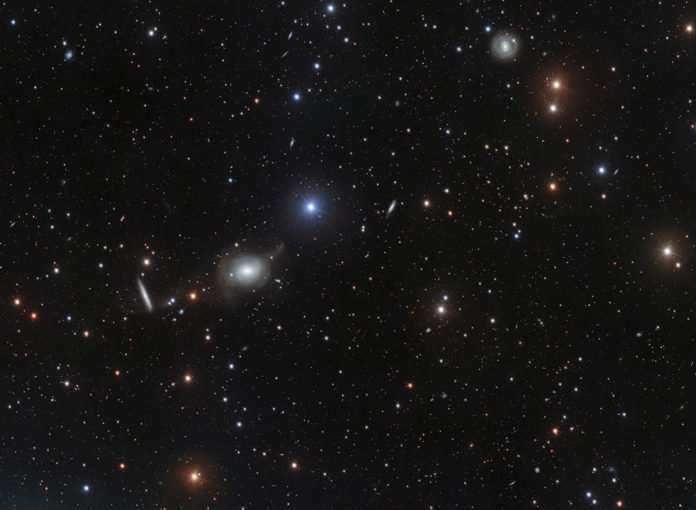Utilizing the sensitive OmegaCAM detector at the core of the VST, a group driven by Marilena Spavone from INAF-Astronomical Observatory of Capodimonte in Naples, Italy, caught pictures of a wide variety of galaxies in various environments.
One of these systems is NGC 5018, the milky-white galaxy near to the center point of this picture. It lies in the star grouping of Virgo (The Virgin) and may at first take after only a diffuse blob. Be that as it may, on closer investigation, a questionable stream of stars and gas — a tidal tail — can be seen extending outwards from this circular system. Fragile galactic highlights, for example, tidal tails and stellar streams are signs of galactic features and give indispensable insights to the structure and elements of cosmic systems.

Credit: ESO/Spavone et al.
As well as the many elliptical (and a few spirals) galaxies in this remarkable 400-megapixel image, a colorful variety of bright foreground stars in our own Milky Way Galaxy also pepper the image. These stellar interlopers, such as the vividly blue HD 114746 near the center of the image, are not the intended subjects of this astronomical portrait, but happen to lie between the Earth and the distant galaxies under study.

Credit: ESO, IAU and Sky & Telescope
Less prominent, but no less intriguing, are the faint tracks left by asteroids in our own Solar System. Just underneath NGC 5018, the faint streak left by the asteroid 2001 TJ21 (110423) — captured more than a few progressive perceptions — can be seen extending over the picture. Further to one side, another space rock — 2000 WU69 (98603) — left its follow in this staggering picture.
While astronomers set out to investigate the delicate features of distant galaxies millions of light-years from Earth, in the process they also captured images of nearby stars hundreds of light-years away, and even the faint trails of asteroids only light-minutes away in our own Solar System. Even when studying the furthest reaches of the cosmos, the sensitivity of ESO telescopes and dark Chilean skies can offer entrancing observations much closer to home.
This research was presented in the paper “VEGAS: A VST Early-type Galaxy Survey. III. Mapping the galaxy structure, interactions and intragroup light in the NGC 5018 group” by Marilena Spavone et al., to appear in the Astrophysical Journal.
